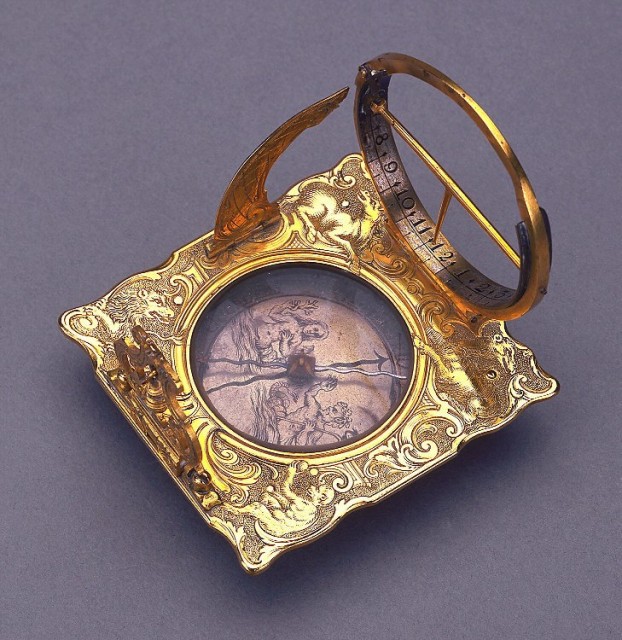Some people still remember men who, from a small slit pocket in a waistcoat, pulled out a round pocket watch on a chain, can only think of knapsacks and hiking gear when they hear the word compass. We think of the sundial like the nice old bronze one on a stone base that I saw upstate, still giving the time as the sun set on it last week. Yet, in eighteenth century Augsburg, Germany, a center of scientific learning, engraving and the arts of metalsmithing, this sundial and compass might have been pulled from an elegant gentleman’s waistcoat. It also made him an elegant traveller or could also have enhanced a room of collected objects, a popular pastime in the mid-eighteenth century. Augsburgers were especially enthusiastic about engraved scientific objects.
This combo pocket object shows all the signs of an erudite owner-who cared about accuracy as seen by the use of a plumb-bob below the dial to level the and about artistry as seen by the level of engraving in the designs with allegorical animal references to the four continents at the four corners and a Neptune and mermaid on the face. The engraver might also have been one who put similar motifs around the borders of maps for which Augsburg was famous too. However, as he was made a master goldsmith in 1748, he probably had enough work on the specialty objects to keep him more than busy. These specialty objects included the compasses and sundials made of copper and brass created in Augsburg starting in the mid sixteenth century and lasting in popularity through the early nineteenth century. While the early examples were full size, by the mid eighteenth century when the maker Jacob Emmanuel Lammit was working, the pocket dial industry had become large enough to include a broad range of quality. This object represents the combination of the artistic trades of Augsburg, with the tremendous fascination with specific scientific instrument making.
A Drawing Room GPS
